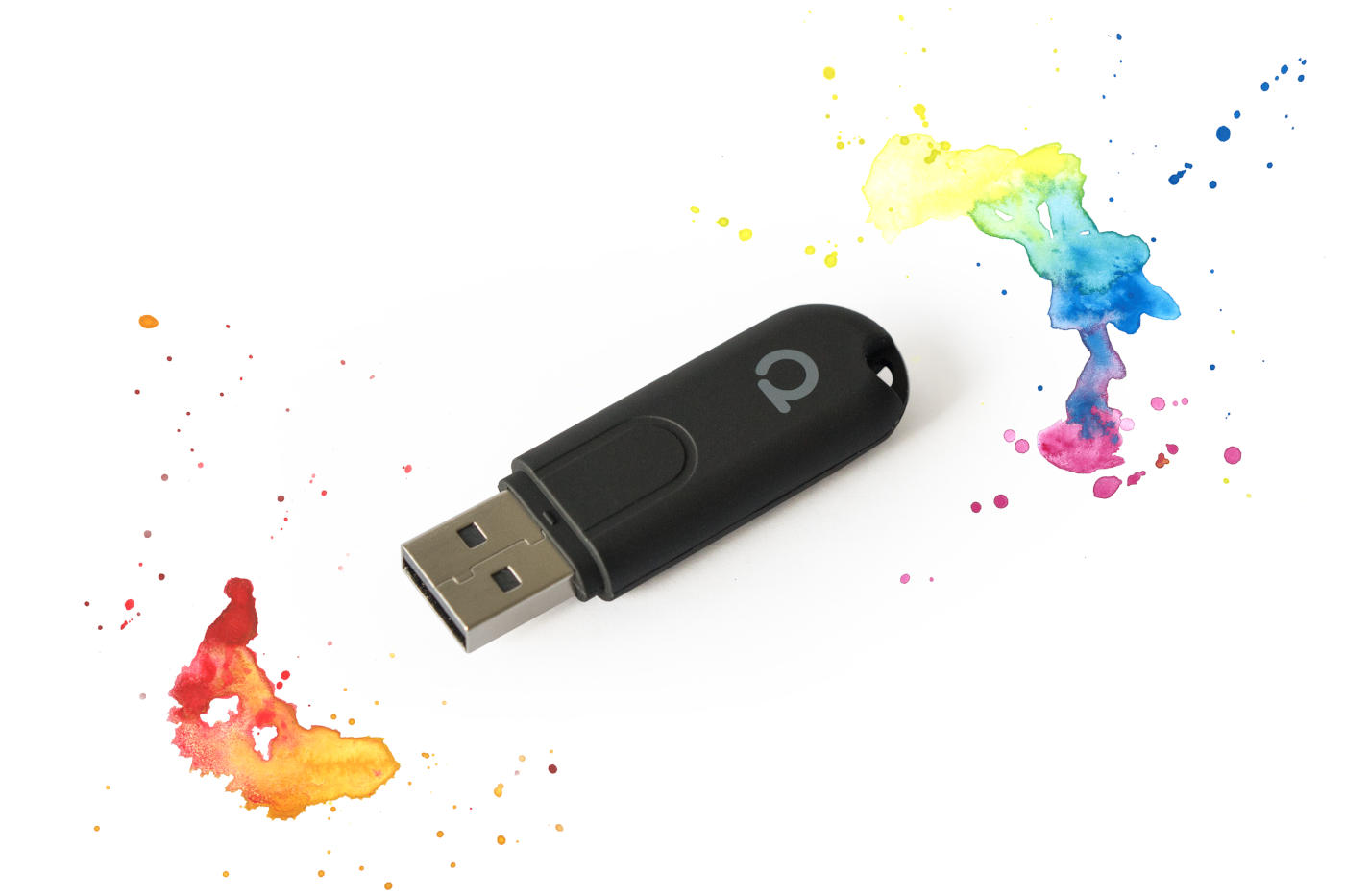Recently, I migrated my whole home automation setup from a group of Raspberry Pis to an Intel NUC; specifically the Intel NUC8i5BEK. Due to an increasingly larger set of devices, a single Pi for running Home Assistant and Node-RED did not cut it anymore. See my post on my hardware setup for more information.
With the introduction of the Intel Nuc to my setup, the way I configured my system also changed. Previously, I used Hass.io for managing all services. With the new NUC, I wanted to be more in control. I ended up adopting Docker and Docker Compose for my setup.
During the migration of my setup, it took quite some time to figure out the configurations for all services. In this blog post, I share the configurations I eventually came up with, and which now power my system. I now have running containers for Home Assistant, Node-RED, AppDaemon, MariaDB, VS Code, and Deconz.
Any questions about these setups? Feel free to add a question in the comments. Tips to improve it, those are very welcome too!
Table of contents
- Use of the .env file
- Note on volumes
- Docker compose for Home Assistant
- Docker compose for MariaDB
- Docker compose for Conbee / Deconz
- Docker compose for Node-RED
- Docker compose for AppDaemon
- Docker compose for VS Code
- docker-compose.yaml overview
Updates
14-05-2020: Updated VS Code setup.
Use of the .env file
Al my configurations are pushed to Github as a way of back up. It’s not really desirable to commit secrets (passwords, tokens, etc.), so you don’t want these in your config file. Luckily, docker-compose can read these from an .env file. In all the examples below, I assume that you have a .env file with the required variables.
Note on volumes
Most of the docker containers use volumes to store persistent data. Without these volumes, all data and configuration would be lost if you restart one of the containers. Make sure to check the volumes config of each configuration block and update accordingly to your liking.
I store all my configuration (e.g., al volumes) in a central directory like ~/homeautomation-config. This directory can then be easily backed up on a remote device.
Docker compose for Home Assistant
The Home Assistant docker is the main container of my smart home setup. Most configuration is done within HA itself, so it’s a matter of spinning up the container. I use MariaDB for storing all event data, so that container needs to start first. I also make sure that my Zigbee hub is running before starting HA.
- Website:
- Home Assistant
- ENV variables:
LOCAL_USER: (Optional) Map the docker user to your user id. This ensures that files can be edited without root access. Especially useful in combination with the VSCode server image.
# HomeAssistant
homeassistant:
container_name: home-assistant
image: homeassistant/home-assistant
volumes:
# Local path where your home assistant config will be stored
- <local config path>:/config
- /etc/localtime:/etc/localtime:ro
restart: unless-stopped
network_mode: host
depends_on:
# MariaDB is optional (only if you would like to use a different database for HA).
- mariadb
# Deconz is optional (only if you use the deconz Zigbee hub).
- deconz
user: "${LOCAL_USER}:${LOCAL_USER}"
Docker compose for Database using MariaDB
I use MariaDB as my main database for Home Assistant. HA gets its own user account to access the db.
- Website:
- MariaDB
- ENV variables:
MYSQL_ROOT_PASSWORD: Root password for the service.HA_MYSQL_PASSWORD: Password that home assistant will use to connect with the db.LOCAL_USER: (Optional) Map the docker user to your user id. This ensures that files can be edited without root access.
# MariaDb
mariadb:
image: mariadb/server:10.3
container_name: mariadb
restart: unless-stopped
environment:
MYSQL_ROOT_PASSWORD: "${MYSQL_ROOT_PASSWORD}"
MYSQL_DATABASE: ha_db
MYSQL_USER: homeassistant
MYSQL_PASSWORD: "${HA_MYSQL_PASSWORD}"
user: "${LOCAL_USER}:${LOCAL_USER}"
volumes:
# Local path where the database will be stored.
- <local db path>:/var/lib/mysql
ports:
- "3306:3306"
Docker compose for Zigbee hub using Deconz

To control my devices, I use the ConBee USB ZigBee hub from Dresden Elektroniks. It’s a great device with a vast list of compatible devices. Luckily, there is a Docker image that can be used to run their software. It even has support for viewing the mesh network through VNC.
- Hardware:
- Conbee 2 (I'm using the Conbee 1, but the v2 is slightly improved and should be bought from now on.)
- Website:
- Conbee 1 or Conbee 2
- ENV variables:
VNC_PASSWORD: Password to use when connecting to the VNC server (for viewing the mesh network).
- Additional notes:
- You need to map the right USB device to the container. For the Conbee 2 the device mapping is slightly different. You can use `/dev/ttyACM0` instead of `dev/ttyUSB0`.
# Deconz
deconz:
container_name: deconz
image: marthoc/deconz
restart: unless-stopped
network_mode: host
environment:
# You can access Deconz at this port
DECONZ_WEB_PORT: 8080
DECONZ_WS_PORT: 8088
# Set VNC_MODE to 0 to disable it completely
DECONZ_VNC_MODE: 1
DECONZ_VNC_PORT: 5900
DECONZ_VNC_PASSWORD: "${VNC_PASSWORD}"
volumes:
- /etc/localtime:/etc/localtime:ro
- /etc/timezone:/etc/timezone:ro
# Replace <local path> with a path where all deconz config will be stored.
- <local path>:/root/.local/share/dresden-elektronik/deCONZ
devices:
- "/dev/ttyUSB0:/dev/ttyUSB0"
Docker compose for Node-RED
Node-RED powers most of the automations in my smart home. After setting up the container, you can install extensions and configure the connection between Home Assistant and Node-RED.
- Website:
- Node-RED
- ENV variables:
LOCAL_USER: (Optional) Map the docker user to your user id. This ensures that files can be edited without root access. Especially useful in combination with the VSCode server image.
- Additional notes:
- When the Node-RED container is running, you can install the Home Assistant extension and connect Node-RED with HA. You only have to do this once. After the initial install, all configurations and extension are saved.
- The Home Assistant extension for Node-RED is node-red-contrib-home-assistant-websocket. You can install this extension within Node-RED by going to "Manage palette" in the menu.
# Node-RED
nodered:
container_name: nodered
image: nodered/node-red
ports:
- "1880:1880"
volumes:
# Local path where all Node-RED config will be stored.
- <local path>:/data
depends_on:
- homeassistant
environment:
TZ: "Europe/Amsterdam"
user: "${LOCAL_USER}:${LOCAL_USER}"
restart: unless-stopped
Docker compose for AppDaemon
AppDaemon is a great way to create small Python-based scripts that can interface with Home Assistant. AppDaemon runs in its own container and needs a “long lived access token” from HA to communicate.
- Website:
- AppDaemon
- ENV variables:
SERVER_IP: URL of Home Assistant.HA_APPDAEMON_KEY: Long lived access token generated in Home Assistant.LOCAL_USER: (Optional) Map the docker user to your user id. This ensures that files can be edited without root access. Especially useful in combination with the VSCode server image.
appdaemon:
container_name: appdaemon
restart: unless-stopped
image: acockburn/appdaemon:latest
environment:
HA_URL: "http://${SERVER_IP}:8123"
TOKEN: "${HA_APPDAEMON_KEY}"
DASH_URL: "http://${SERVER_IP}:5050"
ports:
- "5050:5050"
volumes:
# Set which local directory will contain all your app daemon configuration
- <local config>:/conf
depends_on:
- homeassistant
user: "${LOCAL_USER}:${LOCAL_USER}"
Docker compose for VS Code Server
Not technically required for Home Assistant, but Visual Studio Code Server is a great way to add a remote IDE to your setup. When the container is running, you have access to a complete IDE within your browser.
- Website:
- cdr/code-server
- ENV variables:
VSCODE_PASSWORD: Password you want to use with VS Code
# Visual Studio code
vscode:
container_name: vscode
image: codercom/code-server
volumes:
# Set <project dir> to the directory you want to open in VS Code.
- <project dir>:/home/coder/project
# <vs code config> should point to a local dir where vs code stores its data.
- <vs code config dir>:/home/coder/.local/share/code-server
ports:
- "8443:8080"
command: code-server --auth password --disable-telemetry /home/coder/project
environment:
PASSWORD: "${VSCODE_PASSWORD}"
restart: unless-stopped
Complete docker compose file
For reference, the .env and docker-compose.yaml file:
.env
SERVER_IP= 0.0.0.0
HA_APPDAEMON_KEY=some long accces token
VSCODE_PASSWORD=password
LOCAL_USER=1000
VNC_PASSWORD=password
MYSQL_ROOT_PASSWORD=password
HA_MYSQL_PASSWORD=password
docker-compose.yaml
version: '3'
services:
# HomeAssistant
homeassistant:
container_name: home-assistant
image: homeassistant/home-assistant
volumes:
# Local path where your home assistant config will be stored
- <local config path>:/config
- /etc/localtime:/etc/localtime:ro
restart: unless-stopped
network_mode: host
depends_on:
# MariaDB is optional (only if you would like to use a different database for HA).
- mariadb
# Deconz is optional (only if you use the deconz Zigbee hub).
- deconz
user: "${LOCAL_USER}:${LOCAL_USER}"
# MariaDb
mariadb:
image: mariadb/server:10.3
container_name: mariadb
restart: unless-stopped
environment:
MYSQL_ROOT_PASSWORD: "${MYSQL_ROOT_PASSWORD}"
MYSQL_DATABASE: ha_db
MYSQL_USER: homeassistant
MYSQL_PASSWORD: "${HA_MYSQL_PASSWORD}"
user: "${LOCAL_USER}:${LOCAL_USER}"
volumes:
# Local path where the database will be stored.
- <local db path>:/var/lib/mysql
ports:
- "3306:3306"
# Deconz
deconz:
container_name: deconz
image: marthoc/deconz
restart: unless-stopped
network_mode: host
environment:
# You can access Deconz at this port
DECONZ_WEB_PORT: 8080
DECONZ_WS_PORT: 8088
# Set VNC_MODE to 0 to disable it completely
DECONZ_VNC_MODE: 1
DECONZ_VNC_PORT: 5900
DECONZ_VNC_PASSWORD: "${VNC_PASSWORD}"
volumes:
- /etc/localtime:/etc/localtime:ro
- /etc/timezone:/etc/timezone:ro
# Replace <local path> with a path where all deconz config will be stored.
- <local path>:/root/.local/share/dresden-elektronik/deCONZ
devices:
- "/dev/ttyUSB0:/dev/ttyUSB0"
# Node-RED
nodered:
container_name: nodered
image: nodered/node-red
ports:
- "1880:1880"
volumes:
# Local path where all Node-RED config will be stored.
- <local path>:/data
depends_on:
- homeassistant
environment:
TZ: "Europe/Amsterdam"
user: "${LOCAL_USER}:${LOCAL_USER}"
restart: unless-stopped
# AppDaemon
appdaemon:
container_name: appdaemon
restart: unless-stopped
image: acockburn/appdaemon:latest
environment:
HA_URL: "http://${SERVER_IP}:8123"
TOKEN: "${HA_APPDAEMON_KEY}"
DASH_URL: "http://${SERVER_IP}:5050"
ports:
- "5050:5050"
volumes:
# Set which local directory will contain all your app daemon configuration
- <local config>:/conf
depends_on:
- homeassistant
user: "${LOCAL_USER}:${LOCAL_USER}"
# Visual Studio code
vscode:
container_name: vscode
image: codercom/code-server:v2
volumes:
# Set <project dir> to the directory you want to open in VS Code.
- <project dir>:/home/coder/project
# <vs code config> should point to a local dir where vs code stores its data.
- <vs code config dir>:/home/coder/.local/share/code-server
ports:
- "8443:8443"
command: code-server --auth password --port 8443 --disable-telemetry /home/coder/project
environment:
PASSWORD: "${VSCODE_PASSWORD}"
restart: unless-stopped
Series on Home Automation
This post is part of a series of posts on Home Automation. These posts usually cover a part of my own smart home or a project I worked on. I make heavy use of Home Assistant, Node-RED and AppDaemon to control my home; these posts are examples of this.
Interested in my setup?
Home Automation hardware setupOther posts in this series
Interested in Home Automation, Home Assistant or Node-RED? I have a few other posts that might be of interest:
Home Automation / Home Assistant setup with recommended hardware: The four-year update
Overview of my current hardware for my smart home powered by Home Assistant. An update on my previous post of four years ago (!) when I had just started with home automation.
Automatically turn on tv when streaming to a Chromecast
Quick Node-RED tutorial on automatically turning on a TV when streaming media.
Automatic dark mode for Home Assistant
Quick tutorial on setting up an automatic dark mode for Home Assistant.

Pablo on
Hi Wouter,
Thank you so much for this amazing guide! I’ve been hesitant to start with home automation, I was looking for an option to allow me full control over my setup, unlike ecosystems such as SmartThings, or isolated/independent third party apps. Since a long time ago, I’ve known that Home Assistant was the answer, but the amount of configuration required is overwhelming. I finally decided upon it, I heard some complains about performance, hence went directly for an Intel Nuc and a Conbee II. Next thing I was recommended was to prefer a docker setup over hass.io, given that would give me the chance to install Ubuntu in the Nuc at use it at its full potential, which I configured to some extent by following other guides that did not cover as much ground as yours. In all honesty, at this point, I realized that I have to get familiar with docker in order to be more proactive with the adoption of new ‘add ons’. And that was precisely another surprise for me, I didn’t realize these add-ons from hass.io were not going to be available with a docker installation. The more you know. I’m glad that I found your guide, one thing that I’m looking forward to and missing from the guide is connecting home assistant to the mobile companion app. How difficult do you think it might be to extend your setup with this new feature? Is it doable?